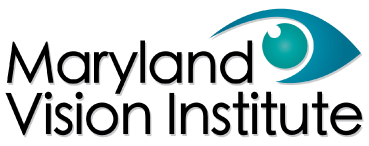Can You Be Too Old For LASIK?
October 2, 2024
While the minimum age for LASIK is eighteen, the FDA does not specify an upper age limit for LASIK. However, if you are older than forty, there may be better options for permanently correcting your vision other than LASIK.
Even if you meet the requirements to be considered a good candidate for LASIK, there are other factors to consider if you are past a certain age. The effects of aging on the eye can impact the long-term results of LASIK.
Keep reading to learn more about LASIK and what procedures may be best for those over forty!
What is LASIK?
 LASIK is a popular laser vision correction procedure that permanently corrects the vision of people with common refractive errors, including nearsightedness (myopia), farsightedness (hyperopia), and astigmatism.
LASIK is a popular laser vision correction procedure that permanently corrects the vision of people with common refractive errors, including nearsightedness (myopia), farsightedness (hyperopia), and astigmatism.
During a LASIK procedure, an eye surgeon makes a flap on the surface of the cornea. This flap is gently opened to allow access to the middle part of the cornea, which is reshaped to correct vision.
Millions of people have successfully corrected their vision with LASIK. For most people, LASIK allows them to reduce their dependence on glasses and contact lenses.
What Are the Requirements For LASIK?
To be considered a good candidate for LASIK, a person needs to meet the following requirements:
- At least 18 years old
- A stable eye prescription of at least a year
- Suitable corneal thickness
- Good overall eye health
People with certain chronic health conditions and women who are pregnant would not be considered good candidates for LASIK even if they met all the other requirements.
Can Older Adults Get LASIK?
Although LASIK can be safely performed on people in their fifties and sixties, there are several reasons why LASIK may not be the best option for older adults. These reasons include:
Cataracts
The risk of developing cataracts increases with age. Cataracts occur when proteins within the eye break off and clump together on the eye’s naturally clear lens, impairing vision.
LASIK does not prevent the formation of cataracts, and the development of cataracts will impair the clarity of vision achieved with LASIK. Cataract surgery is the only way to restore clear vision.
If you are over forty, refractive lens exchange (RLE) might be a better way to permanently correct your vision and prevent cataracts. During RLE, the eye’s natural lens is surgically removed and replaced with an artificial intraocular lens (IOL).
While LASIK can be performed after cataract surgery, RLE is usually a better option. It offers both vision correction and cataract treatment in a single procedure.
Presbyopia
Presbyopia, or age-related farsightedness, is another age-related eye condition that can impact the long-term results of LASIK. Presbyopia is caused by the hardening of the eye’s lens and is a natural part of the eye’s aging process.
People often start to develop presbyopia in their early forties. It gradually worsens over time, and most people will eventually need corrective vision aids for clear, near vision.
If a person starts to develop presbyopia, the lasting results of LASIK can be shortened. Because LASIK is a one-time procedure, there is no way to surgically readjust the cornea to correct for presbyopia.
As with cataracts, a better vision correction option for people at risk for developing presbyopia is RLE. Premium IOLs for RLE can correct vision at multiple distances, including near vision affected by presbyopia.
Monovision LASIK
If a person is not at risk for cataracts and would still like to get their vision corrected with LASIK, the best type of LASIK for older adults is monovision LASIK. In a monovision LASIK procedure, one eye is corrected for distance, and one eye is corrected for near vision to create “blended vision.”
Once the eyes have adjusted, they work together to compensate and provide clear vision at near and far distances. Monovision LASIK is often recommended for people who are nearsighted and have some degree of presbyopia.
It can be tested ahead of the procedure with contact lenses to ensure that it is tolerated by the individual and effective at correcting vision.
Implantable Collamer Lenses

Another alternative to LASIK for older adults who want to correct their vision are implantable collamer lenses (ICL). ICL are like contact lenses but are surgically implanted in the eyes between the iris and the lens.
ICLs are made of pliable, biocompatible materials and are entirely unnoticeable after implantation. Their natural flexibility allows them to blend seamlessly with a patient’s eyes.
Unlike LASIK, ICL can correct the vision of people with higher degrees of myopia and astigmatism. They are also suitable for people with thin corneas and dry eyes.
One of the biggest advantages of ICL is that they are surgically removable. If vision changes or cataracts develop after they have been implanted, they can be removed and replaced for cataract surgery or to change prescription strength.
Because there is no upper age limit for LASIK, you may not be too old for LASIK, but past a certain age, other vision correction options may be better choices for you. If you are at risk for cataracts or presbyopia, RLE or ICLs may help you achieve long-lasting, clear vision more effectively than LASIK.
Do you want to learn more about your refractive surgery options? Schedule an appointment at Maryland Vision Institute in Hagerstown, Frederick, or Hancock, MD, today!



